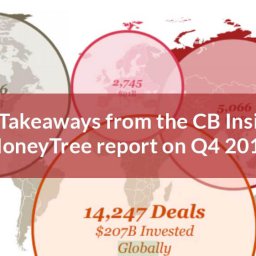What’s in a Term Sheet? 13 Key Terms Every Startup Founder Should Know
Every startup founder wants to impress their potential investors. Most often this is done by demonstrating knowledge, competence, and results – but sometimes, the desire to impress also leads founders to hide their fears of the future, mask their worries, and pretend to know what they’re talking about when it comes to investment lingo.
One common challenge here is the Term Sheet – and the numerous potentially-confusing terms one can contain. The purpose of this article is to provide clear, simple overviews for 13 key Term Sheet terms that every startup founder should know (because the only thing more impressive than successfully pretending to know, is actually knowing).
What is a Term Sheet?
A term sheet is a non-binding document that lays out the proposed terms and conditions under which an investor (VC,angel or other) will make an equity investment in a startup. In a future blog we will highlight other investment vehicles and their benefits such as a SAFE (Simple Agreement For Equity) that are structured as debt instruments instead of equity.
What a term sheet does do is set out the broad parameters of a potential investment – a framework for negotiating the final agreement. What a term sheet does not do is bind an investor (or startup) to completing an investment in any legal manner (typically there are a number of additional documents that follow, including share purchase agreement, investor rights agreement, certificate of incorporation, ROFR and co-sale agreement, and voting agreement – that legally set the actual terms of the investment).
13 Term Sheet terms every startup founder should know:
1) Pre-Money Valuation vs. Post-Money Valuation
Pre-money valuation refers to the agreed value of the company before the new investment. Realize that in setting up the company, shares were established and divided up among participants, but without a public listing that establishes a market price for each of those shares (and therefore a standard means of identifying the value of the company), thevalue for the start-up is derived by the new investor(s) more so from metrics such as current sales revenues, costs and profits, plans for the use of the new funds, estimates regarding future market and company performance and more. In essence, what they expect the investment to be worth after they put in the money. Investment trends also play a role (i.e., what ‘multiple’ of current revenues other start-ups in a similar market space and of a size/maturity are obtaining). As a form of educated opinion in the end, however, it is often subject to further negotiations before all parties agree.
And as the name implies, post-money valuation is the mathematical value of the company after the investment has been made.
Formulas:
Pre-money valuation = Post-money valuation – New investment
Post-money valuation = Number of shares company has after investment * Price per share at which the investment was made
Example 1:
Shareholders of Bob’s Burger Company own 100,000 shares, which is 100% of equity. If an investor then makes a $20,000 investment into Bob’s Burger Company, in return for 20,000 newly issued shares, then the pre-money & post-money valuations are:
Post-money valuation = $120,000 (120,000 * $1)
(where 120,000 = number of shares company has after investment (100,000 before + 20,000 additional), & $1 = price per share at which the investment was made ($20,000 for 20,000 shares))
Meaning the pre-money valuation would be: $100,000 ($120,000 – $20,000)
(where $120,000 = post-money valuation calculated above, & $20,000 = the new investment)
Example 2:
Bob’s Burger Company has 10 initial investors, who originally invested $1000 for 1000 shares each = $10,000 total investment (10,000 total shares & $1 per share initial ‘value’).
A new investor comes along willing to put in $5000 for 20% of company, which means they see the value of the company post-money at = $25,000 ($5K x 5 = 100%). This suggests a pre-money valuation = $20,000 ($25K – $5K, but 2x what the original investors have put in).
If/when everyone agrees, individual new share values are not necessarily going to be $2.50 in this case however, depending on the nature of the stock classes (see key term #2 below). And initial investors no longer own 10% of the company each – they are now ‘diluted’ down to 8% due to the new 11th investor and the share of the firm they are seeking in return for their new money (20%). But, the original investors will come to agree because they now enjoy some form of increased ‘value’ on each of their shares as a result of the deal, and they will have an influx of new capital to continue growing the business with.
2) Common vs. Preferred Stock
Common stock is the most common type of stock that is issued by companies and based on our experience a share class we recommend you try to stick to. Preferred stock affords additional benefits to the investors including rights over common shareholders.
More can be read on the differences between common stock and preferred stock here and here.
3) Option Pool
The Option Pool is the term used to refer to an amount of equity reserved for future hires, and is a common tactic for attracting talent to a startup. This Equity Simulator tool helps model varying Option Pool sizes, and their impact on pre-money / post-money valuations and dilution. In our experience an option pool of 15% provides for sufficient room to incentivize and attract key employees.
4) Pro-Rata Rights
Pro-rata rights give an investor the right to participate in a subsequent round of funding – the main purpose being to enable the investor to maintain a percentage of ownership they are comfortable with / prevent being diluted too much. Pro-rata rights are a “right”, not an obligation.
Mark Suster wrote a great post on pro-rata rights (and SUPER pro-rata rights), which you can read here.
5) Drag Along Clause
Designed to protect the majority shareholder, a drag-along clause enables a majority shareholder to force a minority shareholder to join in the sale of the company.
Example:
You own 60% of your company, your angel investor owns 35%, and an old friend owns 5%. One day Amazon makes an acquisition offer for enough money to make both you and the angel investor say “yes please!”. However, without a drag-along clause, the minority 5% shareholder can refuse to sell their stock, and potentially cause Amazon to pull out of the deal.
Brad Feld discussed the drag-along clause in more detail on his blog.
6) Anti-Dilution
An anti-dilution provision is used to protect investors in the event a company issues equity at a lower valuation than in previous financing rounds (has a down round). Designed to protect investors from losing ownership in the company, this would result in additional “bonus” shares being issued to those with anti-dilution.
Anti-dilution can potentially lead to troubles for founders, so we recommend you become even more familiar with the anti-dilution intricacies (reading this post by Brad Feld is a start).
7) Dividends
A dividend is a sum of money paid regularly (typically quarterly) by a company to its shareholders out of its profits (or reserves). Dividends are more common for mature companies or sole proprietor businesses, and come into play much less often with startups.
8) No-Shop Agreement
A no-shop agreement (or no-shop clause) essentially means that you (the company founder and “seller”) are not allowed to talk to other potential investors after you sign the term sheet. As a founder you should ensure that any no-shop clause is limited to a finite time period (approximately the amount of time you expect it will take to finalize the deal with the investor – often 45-60 days is enough).
9) Pay to Play
Pay to play is a provision that requires stockholders to also participate in future investment rounds, or suffer penalties (such as losing anti-dilution protection, forced conversion to common stock, or losing various control rights).
10) Warrants
A warrant is similar to an option, as it gives the holder the right (but not the obligation) to buy stock at a predetermined (typically favourable to the investor) price within a certain timeframe.
11) Cost of Counsel
In a term sheet, Cost of Counsel refers to the investor requiring the company they are investing in to reimburse a portion of their legal fees.
12) Information Rights
Typically required by VCs, Information Rights grant the right to certain company information following the investment – such as performance metrics, financials, etc. To protect sensitive company information, some companies will require a minimum amount of shares be purchased in order for the investor to receive information rights.
13) ROFR
No, ROFR isn’t just a funny sound investors make when they’re considering a deal – it’s an important element often found in term sheets too.
ROFR = Right of First Refusal.
Right of First Refusal is a provision in the term sheet that permits investors to accept (or refuse) the purchase of equity shares offered by the company, before third parties have access to the deal. So if your startup is looking to raise a future round, any investor with ROFR gets to decide yes/no about whether they would like to participate in the round BEFORE the offer is opened up to outside investors.
There you go, now you know! 13 Term Sheet terms that every startup founder should know. Now add to this knowledge by checking out a couple sample Term Sheets, below:
The “Founder Friendly Term Sheet” from Sam Altman of Y Combinator
Term Sheet template from MaRS
To learn even more about Alacrity and the Tech Startup Ecosystem in Canada, check out Alacrity’s podcast hosted by Owen Matthews: Between 2 Term Sheets.





